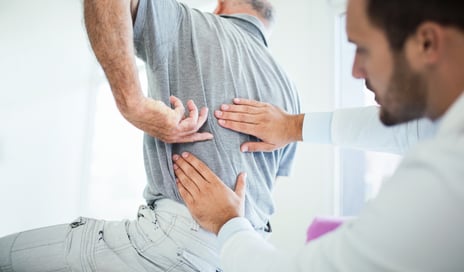 When you live with chronic pain, the only one who can know how much it hurts is you. Pain can be hard to describe because it’s both invisible and personal. If you can’t put into words how much pain you’re in or how it affects your life, your doctor, physical therapist or fitness trainer can’t prescribe the right treatment or exercises for you. Go through these questions to help you get the relief you need.
When you live with chronic pain, the only one who can know how much it hurts is you. Pain can be hard to describe because it’s both invisible and personal. If you can’t put into words how much pain you’re in or how it affects your life, your doctor, physical therapist or fitness trainer can’t prescribe the right treatment or exercises for you. Go through these questions to help you get the relief you need.
What Does the Pain Feel Like?
Be as specific as possible about how your pain feels to help your doctor figure out what is wrong. Here are a few words you can use to describe the way your pain feels, and how your doctor might interpret them:
- Aching, dull: muscle strains, arthritis pain
- Shooting, electric, tingling, burning, pins-and-needles: nerve pain
- Sharp, stabbing: injuries such as a broken bone, muscle or ligament tear, or penetrating wound
- Throbbing: headache, abscess, gout
- Tightness: muscle spasm
Where do you have Pain? Describe exactly where you hurt.
Here are a few examples:
- Deep in my shoulder joint or in the muscles near the surface.
- Under the kneecap or in the back of the knee.
- The outside of my hip or in my groin.
- Is the pain in only one spot, or does it travel?
- Does the pain remain steady, come and go, or only flare up when you move in a certain way?
How Much Does it Hurt?
Explain the intensity of your pain. That’s where the pain scale comes in. Your doctor will likely ask you to “rate” your pain on a scale of 0 to 10 – where 0 is pain-free and 10 is unimaginable pain. The doctor can use your score to help determine what type of treatment you may need.
How Does the Pain Affect Your Life?
Tell your doctor which activities you’ve had to adjust, and which ones you now avoid entirely because of your pain. The impact the pain has on your life is just as important as the pain itself.
Examples of life changes:
- Have you been skipping your morning walk because of the pain?
- Are you missing out on normal activities?
- Can you barely get out of bed in the morning?
- Does the pain leave you so drained and depressed that you don’t want to be around people?
When Do You Hurt?
Try keeping a journal to help you track when in the day your pain is at its worst. The timing of pain can help your doctor fine-tune your treatment. For example, if you tell your doctor you have higher pain in the morning versus the evening, they can adjust your treatment.
What Helps/Worsens Your Pain?
Make note in your journal what you’ve tried to relieve the pain (rest, ice, heat, over-the-counter pain medicine). Did they ease the pain, have no effect or make it more intense?
With a good description of your pain, your doctor will have a better chance of getting you the relief you need. But even when your doctor knows the cause of your pain, treatment might not be a quick fix. It a trial-and-error process that takes time. Be patient, but persistent.


.jpg?width=447&name=GettyImages-1173137476%20(1).jpg) Oh, my aching feet! More importantly, why do my feet hurt? Let me explain further. At times in the past, the top of my foot has felt like it was being crushed by the laces of my sneakers. I logically thought that all I needed to do was loosen the laces of my sneakers and it would solve the problem. It did not help. Really, all it did was create more problems because then my sneakers felt like they were going to fall off, and then the loose-fitting sneakers began to rub on and irritate my heels. On top of that, when I did loosen the laces, the shoes would then come untied too easily.
Oh, my aching feet! More importantly, why do my feet hurt? Let me explain further. At times in the past, the top of my foot has felt like it was being crushed by the laces of my sneakers. I logically thought that all I needed to do was loosen the laces of my sneakers and it would solve the problem. It did not help. Really, all it did was create more problems because then my sneakers felt like they were going to fall off, and then the loose-fitting sneakers began to rub on and irritate my heels. On top of that, when I did loosen the laces, the shoes would then come untied too easily.